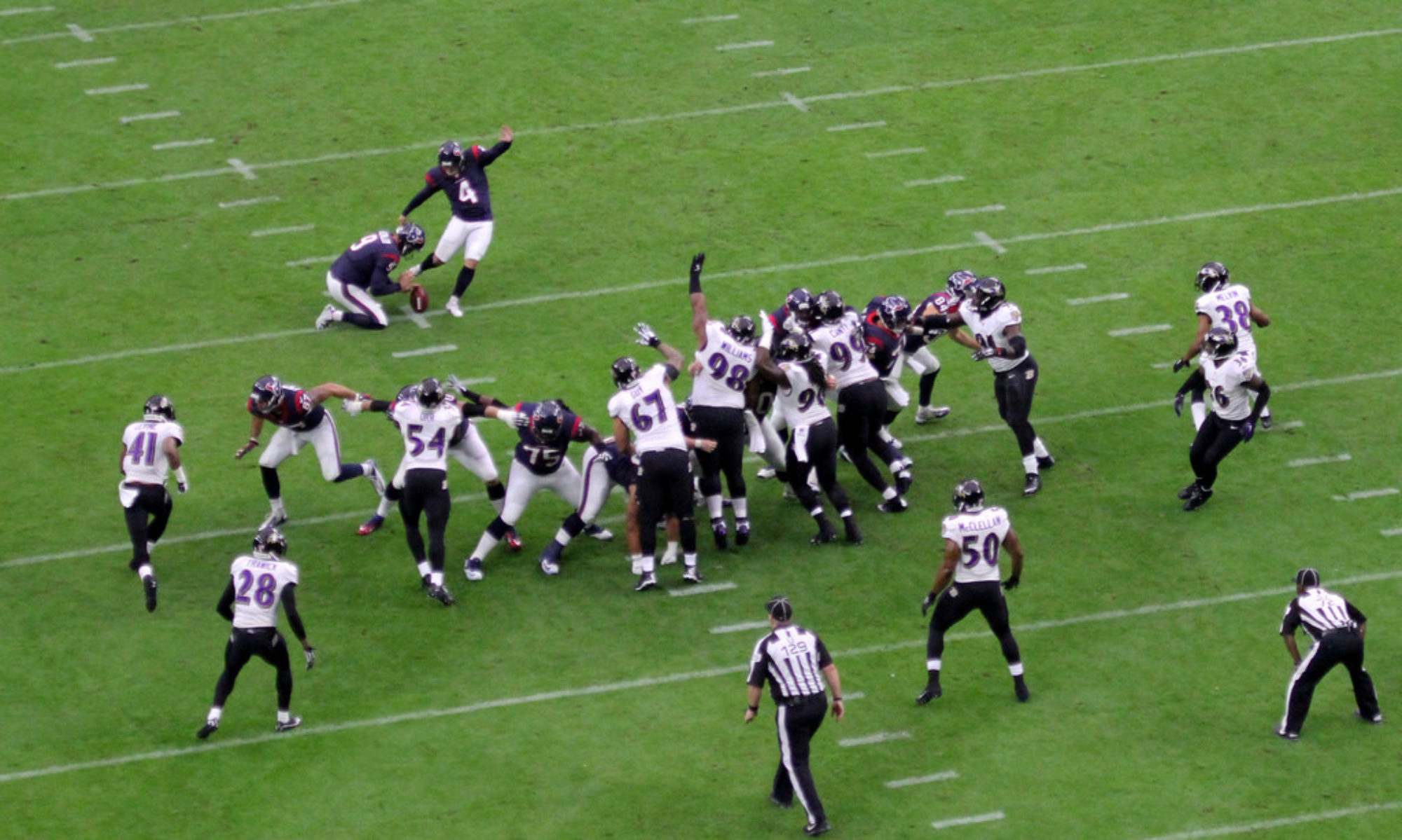
This offseason has been, if not universally panned, I would say at least mostly disparaged by smart people who happen to like the Houston Texans and are free to talk about it. The Texans are, as of this moment, carrying $41 million in cap space. Free agency as a construct is done. Gerald McCoy is out there as I write this on Thursday afternoon, but probably won’t be when this posts. I still think some of the running backs in free agency would upgrade Houston’s roster. But otherwise you’re looking at trying to rehabilitate the injured/washed — guys like Michael Crabtree and Eric Berry — or just finding a complete unknown.
So the Texans have $41 million in cap space, plus Clowney’s roughly $16 million cap figure. Even if you have hated the offseason they’ve had up to this point, they have a unique opportunity here, it’s something that has precedent in the NFL via both the 49ers and the Jaguars.

When re-signing franchise player Jimmy Garoppolo, the 49ers heavily front-loaded the contract. His cap figure was $37 million after the first season on account of a 2018 roster bonus of $28 million guaranteed. His cap figure in 2019 is just $19.3 million. For future years — all essentially option years for the 49ers — he’s around $26-$27 million. That might sound like a lot — remember that Matt Ryan and Ben Roethlisberger have $33 million cap hits in 2020. Aaron Rodgers is at $32.6 million in 2020. Russell Wilson is at $31 million in 2020. Being at “only” $26 million is still quite a discount from the star quarterbacks.
The Jaguars used this strategy successfully with a number of their free agents from their big cap space days. Julius Thomas, to name one player, wound up with a $10.3 million cap hit in the year that he signed, and a $7.3 million cap hit in his second season. If Thomas had actually been good, the long-term contract structure would have helped the team retain him. Instead, it made him a lot easier to get rid of.

So what the Texans could do with Clowney, instead of getting wrapped up in his long-term value, is use their available cap space in 2019 to satisfy him without getting locked into a contract that’s onerous long-term. Let’s use DeMarcus Lawrence’s contract as an example, since that seems to be the one every agent is comparing against. Lawrence makes $48 million fully guaranteed on a five-year, $105 million contract — the cap hits start at $11.1 this year, then float into the low $20 million-a-year range starting in 2020.
Let’s frontload that deal. Let’s say we make Clowney’s 2019 cap hit $33 million with a nice signing and roster bonus. Let’s say we aim to make the first three years palatable and fill the last two with unlikely to-be-earned things that could lead to a re-negotiation. That leaves us with something like this:
2019: $33 million
2020: $13 million
2021: $14 million
2022: $22 million
2023: $23 million
Those are cap figures the Texans can work around — the backend of the deal is as good as the middle of Lawrence’s deal, and the front end is beautiful for facilitating contracts like Deshaun Watson’s extension. What else are the Texans going to do with this cap space? Clearly not much. When you wipe out $33 million of the $57 million (cap space plus Clowney’s tag), the Texans still have plenty of available cap space to pursue trades or free agents if they’d like. It’s a win-win that would reward Clowney, help the Texans long-term, and do something with this cap space they’re not using now.
Quick FAQ!
Rivers, do you really think the Texans would consider this?
Haha, of course not. The Texans front office is run like a Madden simulation of a small market front office.
Rivers, do you think Clowney is worth the money?
What is anybody worth, anyway? Only what they’re willing to pay you. I think the better way to ask this question is “Would an NFL team give Clowney more money than this as a true free agent?” and the answer is “obviously.” I don’t see him work every day, and I can’t speak to why Houston might find his various dings more or less likely to reoccur. I do think it’s pretty evident from their actions that they would rather not be committed to him long-term.
Rivers, why not just trade Clowney?
Well, do you like having a good football team? I’m happy to say I think Whitney Mercilus is underutilized by this defense and that he could fill in 70% of what Clowney offers, but that doesn’t mean it’s a for-sure truth. It’s also something a smartly-run defense would be able to do without getting rid of their star edge player who happens to be able to stand up and wreck things as an interior rusher.
Do you remember trading Duane Brown for a second-round pick — more than most players fetch — and watching his cap space sit unutilized while Deshaun Watson took more sacks than any player since Jon Kitna on the Mike Martz Lions? I do. It was Not A Great Outcome. Maybe Lonnie Johnson will make us forget all about it, but I have my doubts. The traditional media and teams, in my view, underrate what above-average NFL play is worth.
Also, you know, the part where they should have traded Clowney like two months ago if they wanted anything back.

One Reply to “A user’s guide to using Houston’s cap space to make Jadeveon Clowney happy”